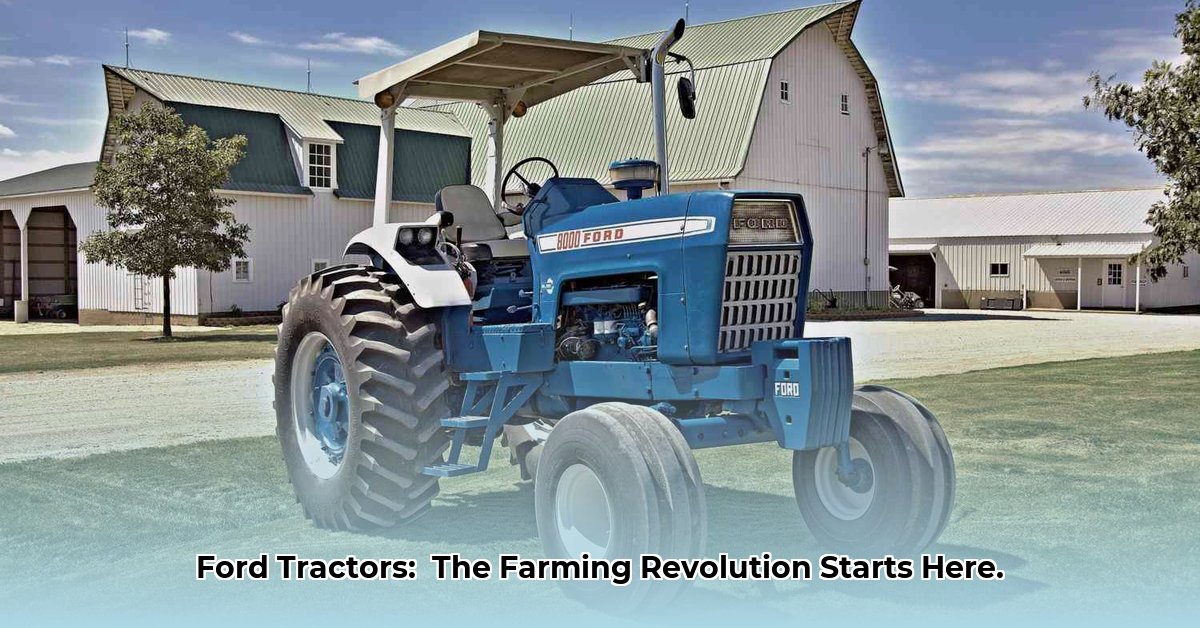
Ford tractors weren't just machines; they were agents of agricultural change, fundamentally altering farming practices. This article explores their historical impact, technological advancements, and evolving relationship with sustainable agriculture. From their humble beginnings to their modern iterations, Ford tractors tell a compelling story of innovation, efficiency, and the ongoing quest for sustainable food production. For a deeper dive into specific models, check out this detailed resource.
The Fordson: A Green Revolution on Wheels
Before tractors, farming was backbreaking labor, reliant on horses and manual tools. Henry Ford's innovative assembly line, renowned for its impact on car production, revolutionized tractor manufacturing. The Fordson, one of the first Ford tractors, emerged as a game-changer. Its simplicity, affordability, and ruggedness empowered farmers to increase productivity significantly. However, this early simplicity came with trade-offs, which we will examine later. Did the increased efficiency and reduced labor offset the environmental consequences? This remains a compelling question in agricultural history.
Growth and the Rise of Larger-Scale Farming
The Fordson's success paved the way for more powerful models like the 9N and 2N. These tractors could handle significantly larger farms, leading to increased yields and greater food production, contributing to feeding a growing global population. However, this shift towards larger farms often correlated with decreased biodiversity and increased reliance on chemical inputs. The question of whether the efficiency gains outweighed the environmental risks remains a complex one, still debated today.
Design Evolution: Power and Efficiency
Mid-20th-century models such as the 8N showcased improved features and reliability. Engineers prioritized fuel efficiency, seeking to maximize output from each gallon. While these advancements were impressive, they were heavily reliant on fossil fuels, raising crucial questions about the long-term environmental sustainability of these powerful machines. Subsequent innovations hinted at solutions, but a complete picture of the environmental impact continues to unfold.
Sustainability in the Modern Era: A Work in Progress
Recent Ford tractor models, especially those developed after the New Holland merger, incorporate technologies aimed at improving sustainability. However, comprehensive data on their long-term environmental impact remains lacking. A thorough assessment of fuel efficiency and emissions is crucial to understand the true environmental cost of their entire life cycle. Key questions persist: Are these tractors as environmentally friendly as hoped? What is the complete environmental accounting of their production, use, and disposal? A straightforward answer is elusive.
Productivity vs. Planet: A Balancing Act
Ford tractors undeniably boosted agricultural productivity, significantly increasing food production globally. But this efficiency often came at the cost of increased fertilizer and pesticide use. This leads us to the central challenge: How can we achieve efficient food production without jeopardizing environmental health? It's a challenge demanding innovation and collaboration across various sectors.
Lessons Learned and Future Directions
The history of Ford tractors offers valuable insights into agricultural innovation. It highlights the continuous drive for efficiency and higher yields, while simultaneously underscoring the urgent need for careful environmental impact assessments and a focus on sustainable designs. The future of agriculture hinges on striking a balance between efficiency and environmental responsibility—a path illuminated by Ford’s legacy.
Ford Tractors Through Time: A Comparative Look
The table below provides a brief overview of key Ford tractor models, highlighting their significant features and related environmental considerations.
| Model | Era | Key Features | Environmental Considerations |
|---|---|---|---|
| Fordson | Early 1900s | Simple, affordable, robust | High fuel consumption, relatively basic design, potential for lower yields per hour of operation |
| 9N | Mid-1900s | More powerful, improved reliability | Higher fuel consumption, contributed to larger-scale farming, potential for increased chemical use |
| 8N | Mid-1900s | Enhanced features, better fuel efficiency (for its time) | Improved efficiency compared to predecessors, but still reliant on fossil fuels |
| Later Models (post-New Holland) | Late 1900s to Present | Advanced features, potential for improved sustainability (e.g., precision agriculture capabilities) | Requires further research to fully assess long-term environmental impact; potential for reduced fuel usage and increased efficiency per acre |
Further research is needed to fully quantify the environmental impact of each model across its entire lifecycle, including manufacturing processes and disposal methods. This ongoing investigation, coupled with advancements in sustainable agricultural practices, will continue to shape the future of tractor design and usage.
(Note: Environmental impact assessments should consider fuel consumption per acre, not just per hour, to account for varying productivity.)